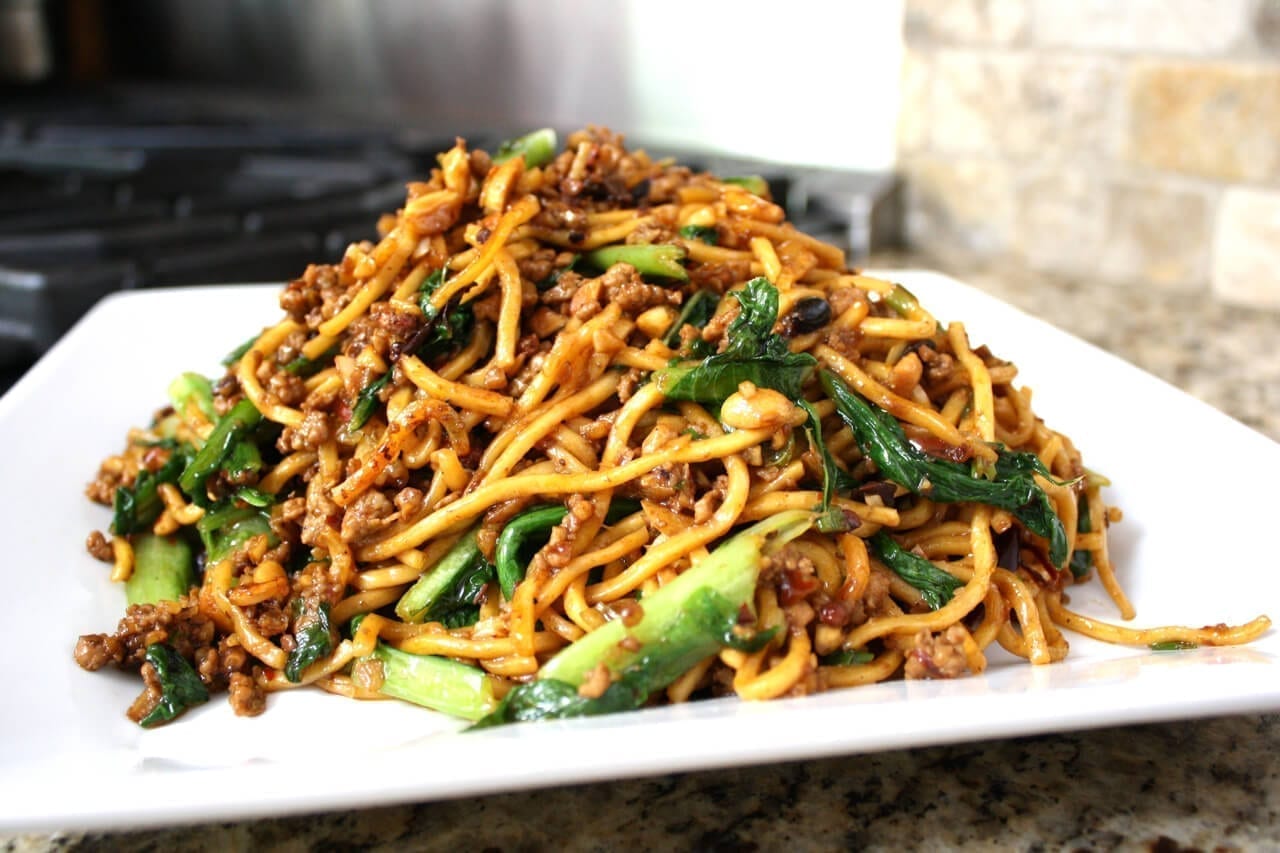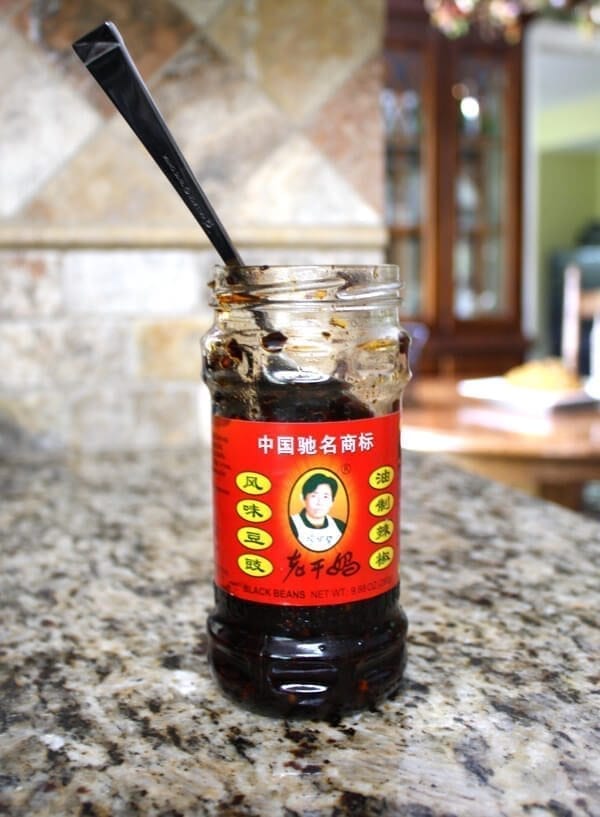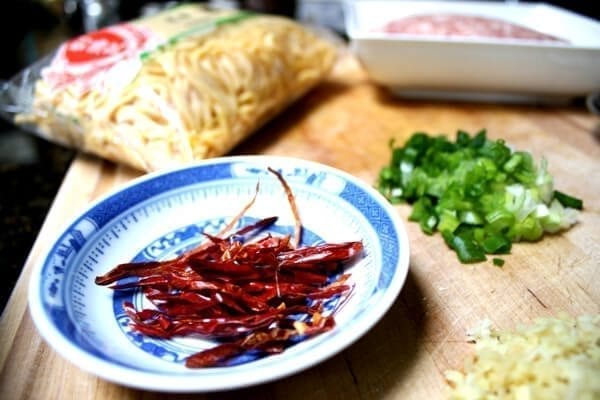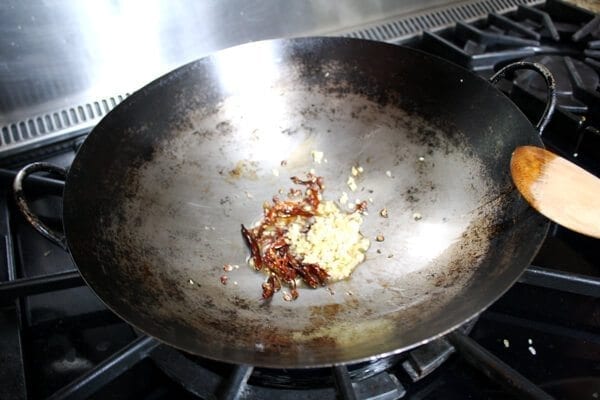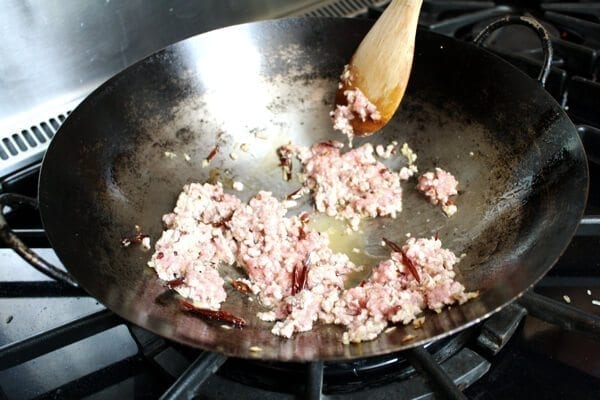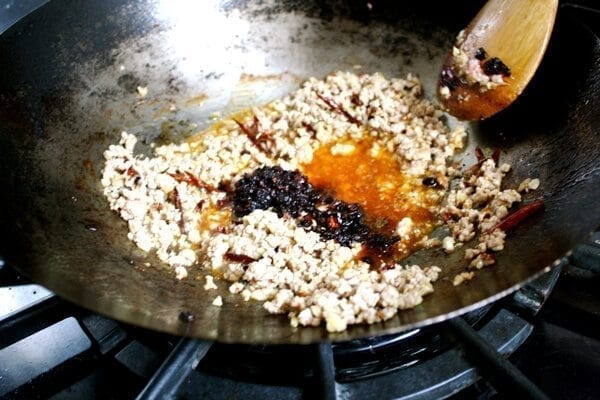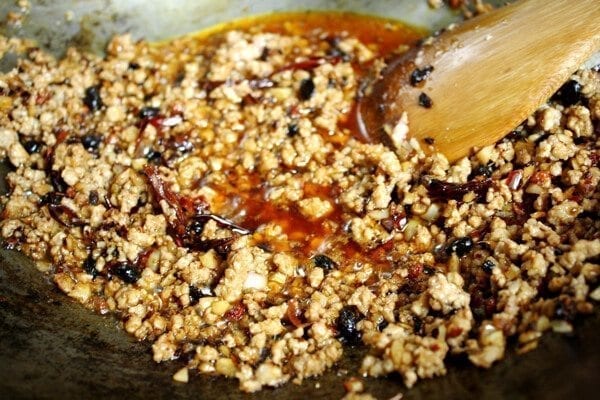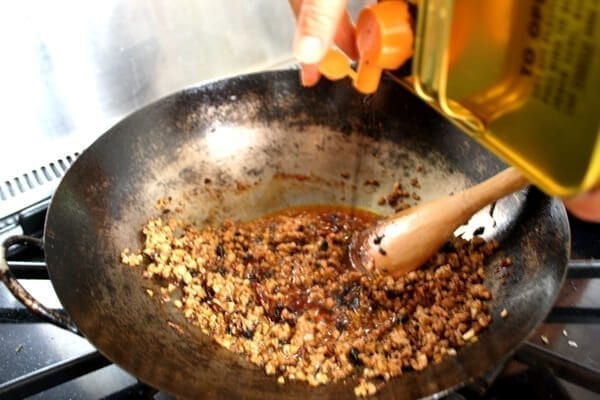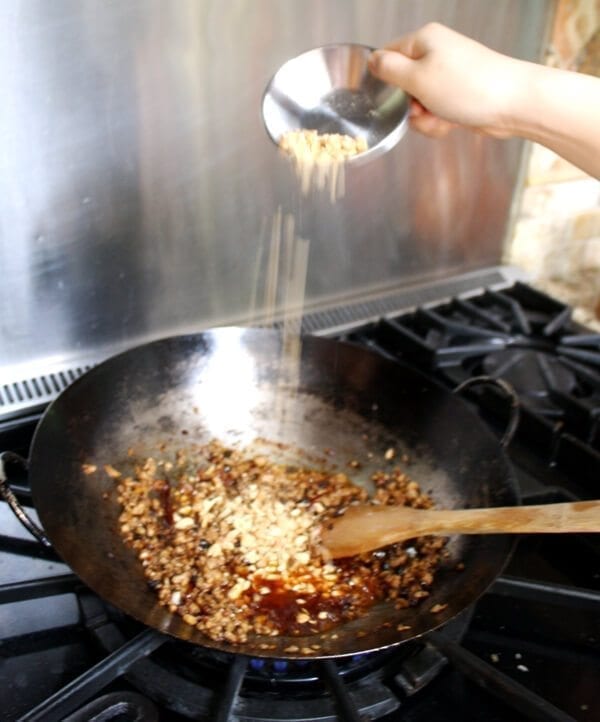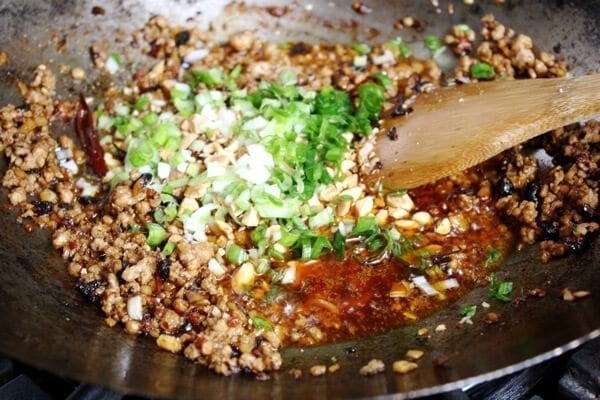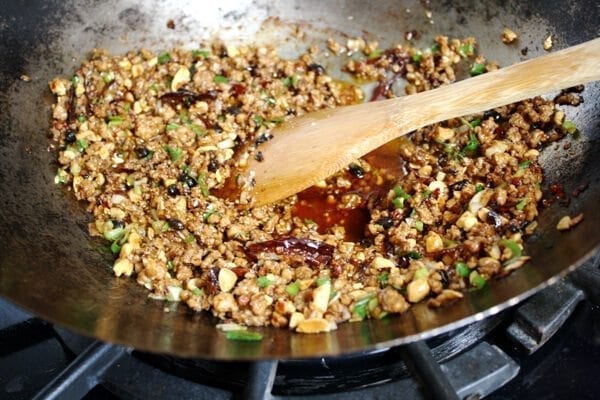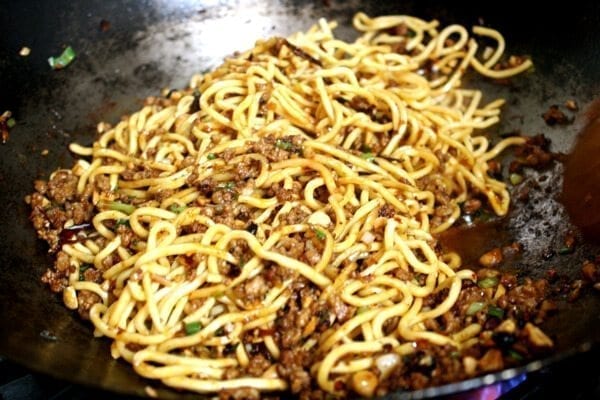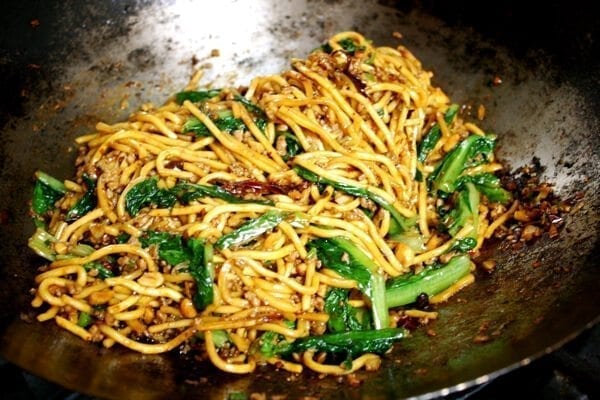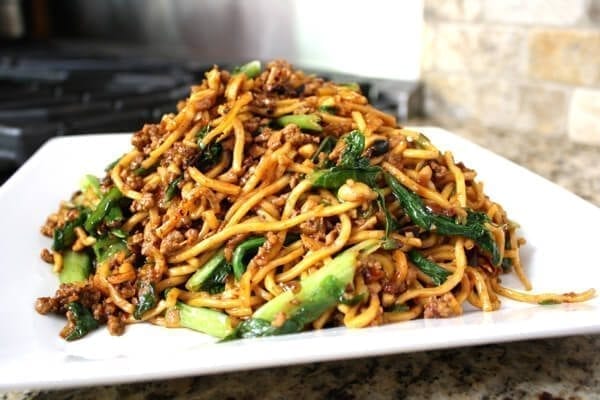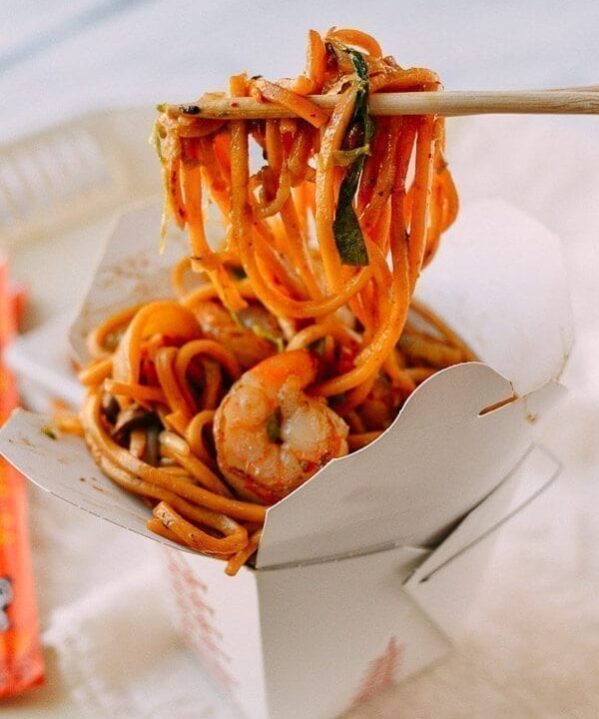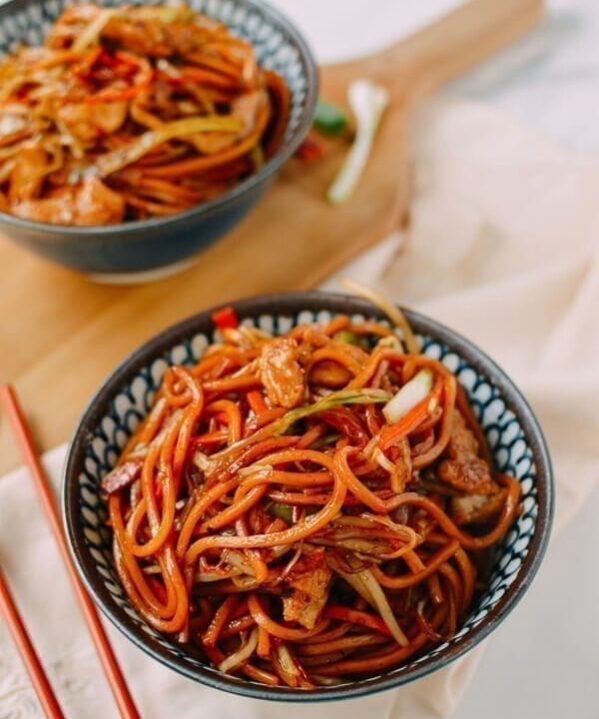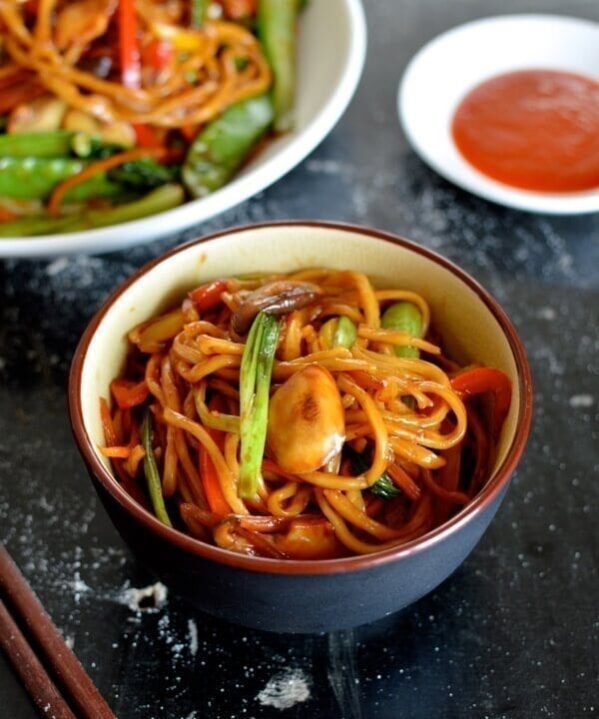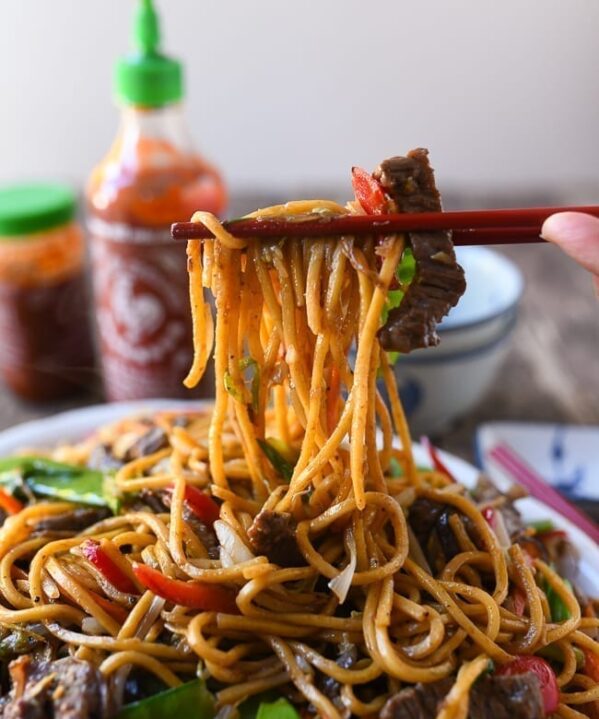This recipe is Kaitlin’s invention, whipped up on a rainy afternoon in Beijing from a few ingredients that we had on hand. Made with lo mein noodles, these special noodles are spicy and incredibly flavorful, and we all bowed down to her greatness after we finished every bit of what was on the plate.
Kaitlin’s Special Noodles feature our favorite Chinese hot sauce, a mixture of chili peppers and Chinese fermented black beans that we featured in our very first noodle recipe. It’s called “Lao Gan Ma Black Bean Chili Sauce,” and can be found in any Chinese grocery store for just a couple bucks. It can also be found on Amazon, of all places, though it’s a LOT cheaper at your local Chinese grocery store. Whatever your source, you have to try it. There are a couple different sauces made under this brand, so make sure you find the black bean and chili one specifically.
Th special noodles recipe also calls for Sichuan (Szechuan) peppercorns, which creates a spicy flavor that sort of numbs your tongue a little. It sounds a little weird, but Sichuan cuisine characterized by this ingredient has become wildly popular across China. At first, it’s sort of strange when you realize that your tongue is tingling. But then it becomes this seriously addictive thing, and you can’t stop eating. It’s an optional ingredient, but definitely recommended if you want to lend the dish a bit of Sichuan flare.
We were pretty detailed with the photos for this one, so here’s the step-by-step. You can also scroll down for this unique lo mein recipe in full.
First, you’re going to want to slice, chop, and mince up all your ingredients, because the dish moves really quickly once you’ve started. With any Chinese dish, it’s good to be prepared before you start!
If you’re shy about too much spice, check out Honey Hoisin Pan Fried Noodles and Soy Scallion Noodles.
Recipe Instructions
So gather it all up.
When you’re ready to cook, heat oil in your wok over medium-low heat and infuse it with the flavor of your dried red chilis (or fresh), Sichuan peppercorns, and ginger.
Raise the heat to medium-high and add the pork. Continue frying until the pork is cooked through.
Add the minced garlic, a couple splashes of Shaoxing wine, and the ½ teaspoon of sugar. Stir and cook for another minute.
Then add 2-3 heaping tablespoons of the Lao Gan Ma Black Bean Chili Sauce.
Stir and cook for a couple minutes to let the flavors meld together.
Then add your sesame oil, white pepper, and soy sauce…
Stir in the peanuts…
And the scallions.
Cook for another minute to get those scallions nice and sweet.
And it’s time to add the cooked lo mein noodles!
Once you’ve stirred those lo mein noodles around and heated them through, which should take a few minutes, you can add your leafy green vegetables and wilt them down.
We used a kind of bok choy here. Taste it. If it needs a bit more salt, you can add a few dashes of soy sauce (careful not to add too much!).
Plate up these spiced up lo mein special noodles, and prepare for greatness.
Here’s the full recipe for Kaitlin’s special noodles:
KAITLIN’S SPECIAL NOODLES
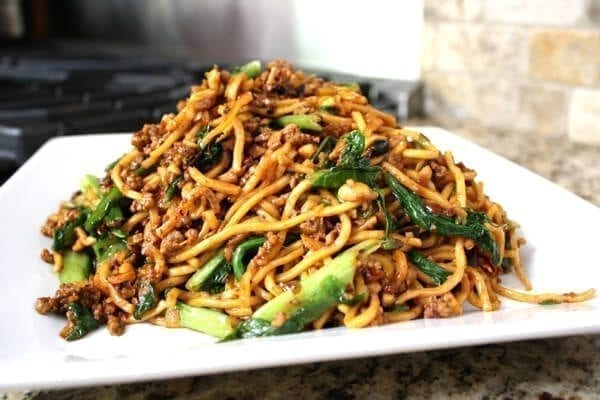
Ingredients
- 1-3 fresh or dried red chilis (sliced thinly, depending on your desired spiciness level)
- ½ teaspoon Sichuan peppercorns (optional)
- 2 tablespoons ginger (finely minced)
- 6 oz. ground pork (170g)
- 5 cloves garlic (finely minced)
- 1 tablespoon Shaoxing wine
- ½ teaspoon sugar
- 2-3 tablespoons Lao Gan Ma Black Bean Chili Sauce
- ½ teaspoon white pepper
- 1 tablespoon soy sauce (plus more, to taste)
- ½ teaspoon sesame oil
- 1/3 cup peanuts (chopped, optional)
- 1 scallion (chopped)
- 1 package cooked yellow lo mein noodles
- A few big handfuls of any leafy green vegetable (anything that wilts quickly and has a mild flavor will do. Bok choy, choy sum, spinach, napa cabbage, etc., washed)
- Oil
Instructions
- Pour 1/3 cup oil into the wok over medium-low heat and add the chilis. Let the peppers infuse the oil while you prepare the other ingredients. If using, crush the Sichuan peppercorns and add them to the oil as well, keeping the heat low enough so that nothing burns.
- After a few minutes, add the minced ginger, turning up the heat very slightly in order to lightly fry the ginger.
- Add the pork and stir until just cooked through, breaking up big chunks. The heat should be medium to medium-high right about now. Add the minced garlic, a couple splashes of cooking wine, and the ½ teaspoon of sugar. Stir and cook for another minute.
- Then add 2-3 heaping tablespoons of the black bean hot sauce. Stir and cook for a couple minutes to let the flavors meld together.
- Add ½ teaspoon white pepper, 1 tablespoon soy sauce, and ½ teaspoon sesame oil. Stir in the peanuts and the scallions. Stir until the scallions have cooked through.
- Turn the heat up to high and add the noodles. Quickly stir fry the noodles for a few minutes to heat them through. When they’re heated and well-coated with the sauce, add the leafy veggies and stir some more. If the noodles start sticking to the wok, stir faster and lower the heat slightly.
- Taste for salt and add additional soy sauce in small increments to taste. Continue stirring until everything is combined and happy. Serve!
